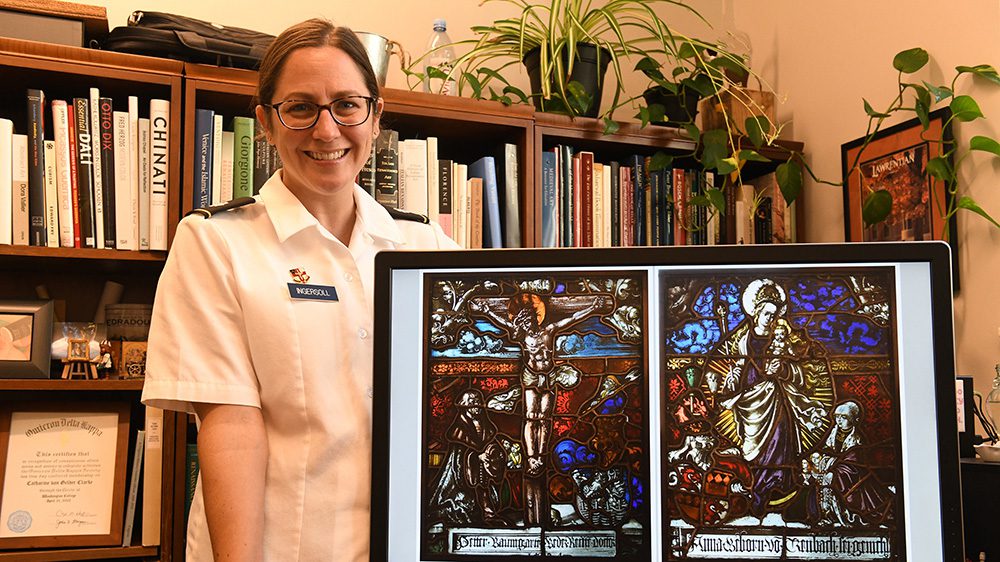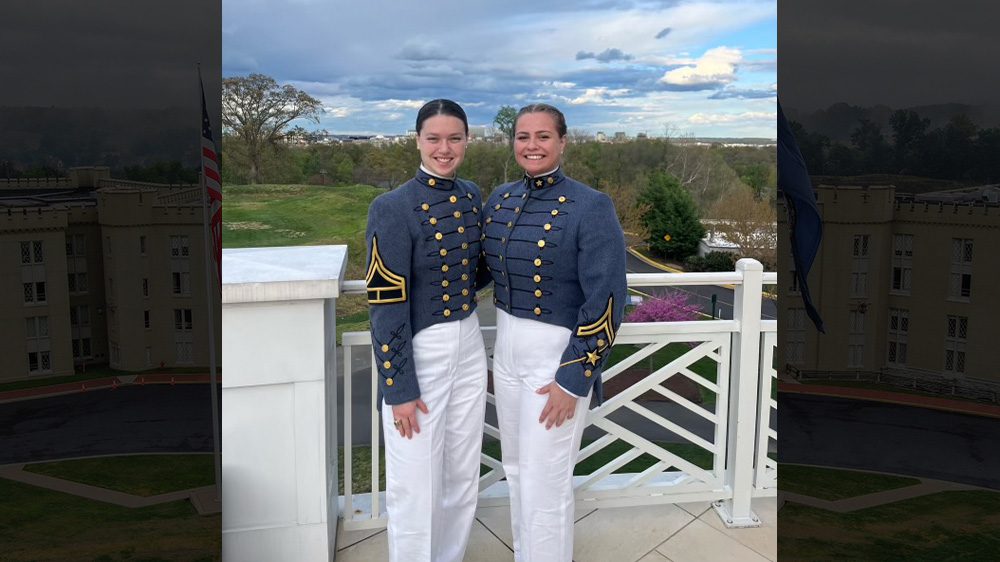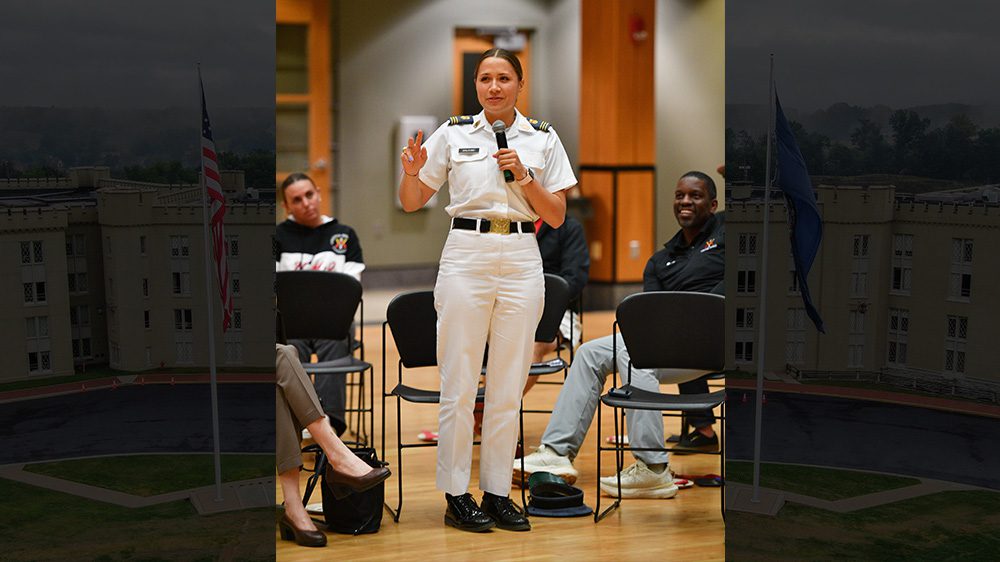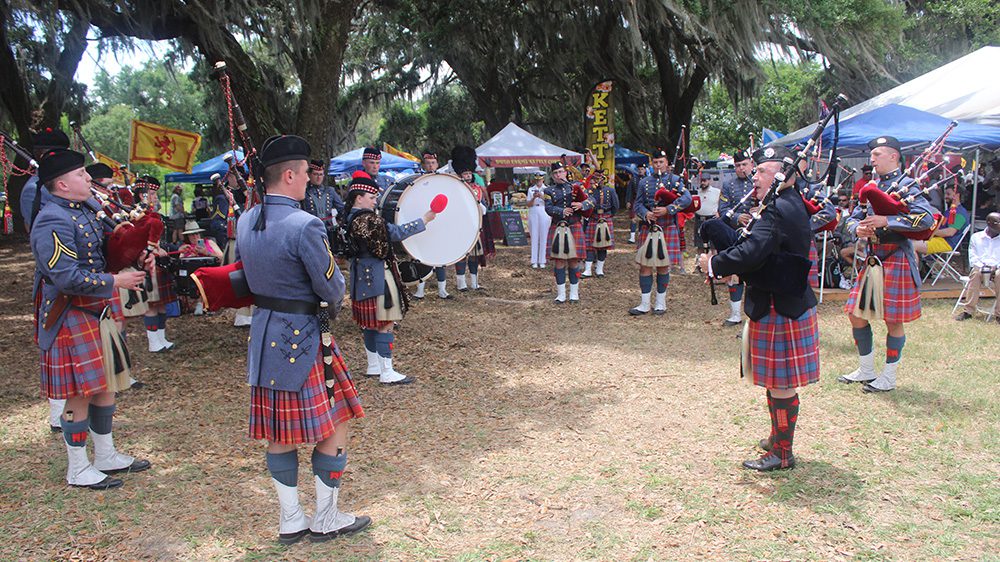Famous artwork has gone missing in the past, like “Poppy Flowers” by Vincent van Gogh or “Portrait of a Young Man” by Raphael, and most people know the Hollywood depiction of the Ark of the Covenant packed in an unmarked crate and lost forever in a government storage building. Lt. Col. Catharine Ingersoll, Ph.D., associate professor of art history in the Department of English, Rhetoric, and Humanistic Studies, was recently instrumental in solving a similar mystery when she was called upon to confirm the identity of two 16th-century stained-glass panels discovered in storage at the Reading Public Museum in Reading, Pennsylvania.
The panels, which depict the crucifixion of Jesus Christ, and the Virgin and Christ child, have been in the RPM collection since they were donated in 1933, but scholars worldwide lost track of their whereabouts. They were removed from display in 2012 for gallery renovations and, at that time, were described only as “16th century Baumgartner panels from Nuremberg,” with the artist unknown and the patron solely identified by his last name, Baumgartner.
In preparation for reintroducing the panels into the gallery earlier this year, research was undertaken by the RPM’s curator to see if more information could be attained using the panels’ inscriptions and known origin. As research progressed, two panels similar in artistic style to those at the RPM were found in the collection of the Metropolitan Museum of Art in New York, New York, and they were credited to artist Hans Wertinger, who was court painter to Ludwig X, Duke of Bavaria. The panels at The Met were also inscribed with the Baumgartner family name as the patron.
Wertinger happens to have been the subject of Ingersoll’s doctoral dissertation, and Ingersoll is considered the foremost expert on Wertinger in the English-speaking world. As a scholar of southern German visual and material culture in the late medieval and Renaissance periods, she was contacted by the RPM curator to contribute her professional opinion of the panels. From her expertise, Ingersoll confirmed the panels originated from Wertinger.
“The panels were made by Hans Wertinger and his workshop in Landshut, Germany,” Ingersoll affirmed. “They were commissioned by Peter Baumgartner and his wife, Anna von Trenbach, for their family burial chapel in the parish church in Mining, Austria, and were completed in 1524. The panels were two of at least seven stained and painted windows adorning the choir and family chapel.” Other stained-glass windows removed from the chapel are now part of the collection at The Met and the Bavarian National Museum in Munich, Germany.
Ingersoll spoke at the RPM unveiling of the reinstalled panels earlier this year. The panels are now exhibited in front of a lighted box, so the colors and details of the stained glass can be fully appreciated. The description of the work is displayed next to it, with complete information about the artist, patron, and original location.
Ingersoll, who fell in love with art history in high school, said it was very rewarding to help the RPM correctly identify the panels. “It is so fun to be a part of the art world in this way, to give Wertinger his laurels and help this small museum,” she stated.
“The mystery of how the panels were incorrectly identified may be from lack of a clear chain of ownership after being removed from the chapel,” explained Ingersoll. “It’s not unusual for pieces as old as these to be bought and sold multiple times, then donated without any documentation crediting the artist.”
Ingersoll teaches many courses at VMI, including The Language of Art, History of Art, Art of Medieval Europe, and Art of Renaissance Europe. She plans to travel to Germany next summer to conduct additional research on the chapel in which the stained-glass panels were originally hung and to learn more about the Baumgartner family.




